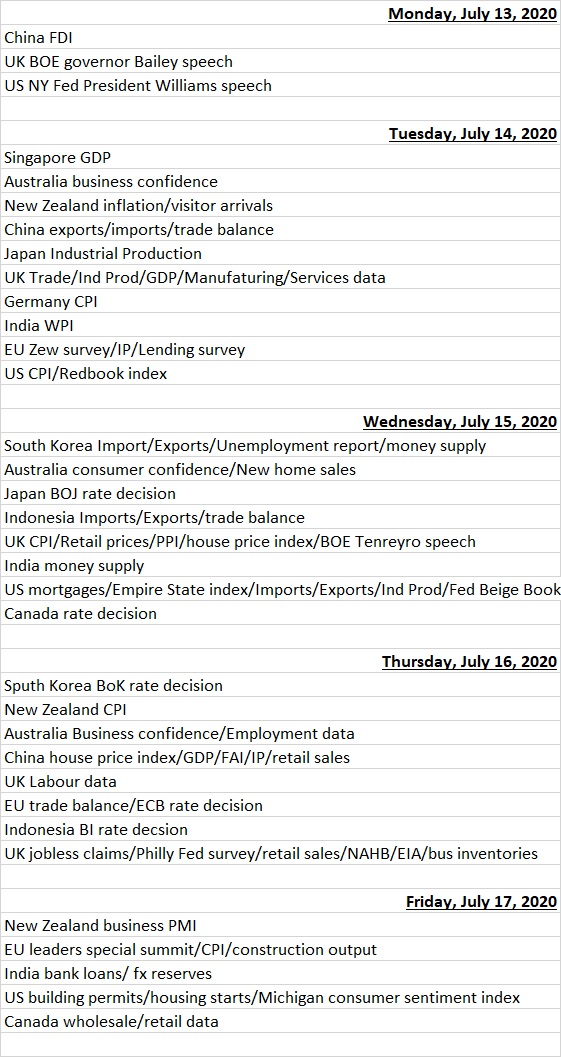(ATF) Financial markets are more optimistic about a rebound in the world’s second-largest economy after data from China last week showed broad credit growth hit a two-year high in June, a trend that is likely to gather pace in coming months.
“We see growing reasons to be optimistic on the outlook for the Chinese economy with a range of activity data surprising on the upside in recent weeks and an acceleration in credit growth likely to support an ongoing recovery,” said Daniel Grosvenor, Oxford Economics’ Director Equity Strategy.
His firm has revised upwards its China GDP forecasts, and now sees 2% growth in 2020 before a recovery to 8.1% growth in 2021.
“However, the speed of the recent China equity rally suggests that it is fueled more by sentiment than these improving fundamentals, with A-share indices up around 20% in a little over two weeks,” he said.
A flurry of economic data will provide evidence in the coming week about China’s economic conditions after new outbreaks appeared to be under control with no new local infection cases reported in recent days.
“We expect Q2 GDP to rebound to 3.5% y/y from -6.8%, driven by strong IP (supply side), and resilient exports and rebounding infrastructure investment (demand side),” said Barclays analysts in a note.
“We expect PPI deflation to narrow further in H2 as infrastructure and exports recover. We see a risk that CPI inflation might rise towards 3% in the near term.”
Away from China, investors await policy meetings at the Bank of Japan, Bank of Korea, the European Central Bank and Bank Indonesia in the week ahead and industrial data for the major economies. Retail sales data for the US and China and inflation numbers for the US, Eurozone and UK will indicate how price pressures will dominate the post-COVID world.
“China is leading the world recovery, with economic activity rapidly returning to more normal levels for both manufacturing and services. A key strength supporting China’s rapid economic rebound is the large size of the domestic consumer market, which has helped to support improving new orders in both the manufacturing and services sectors,” said IHS Markit economists Rajiv Biswas and Bernard Aw in a note.
“Strong growth in China in 2021 is expected to boost the export sectors of many other Asian economies, given the importance of China as a key market.”
Fund flow
Fund flows into China dominated the emerging market landscape in the week ended July 8. The CSI300’s near 10% gain in that week was the second biggest weekly inflow on record for China Equity Funds which snapped its longest outflow streak since 2014, according to fund flow tracker EPFR.
“The flows into China Equity Funds decisively ended their 11-week, $18 billion run of outflows, with the bulk of the money going to China-domiciled ETFs,” said Cameron Brandt, EPFR’s Director of Research. He said investors were chasing the solid gains by the equity benchmarks and robust macroeconomic indicators for the Chinese economy “Low yields for money parked in Chinese Money Market Funds are also prompting domestic investors to look for alternatives.”
EPFR said technology sector funds are benefiting from the perception that remote working and online commerce will continue at much higher levels than was the case before the pandemic. This fund group started the third quarter by setting a new inflow record as they attracted fresh money for the 25th time in the 27 weeks YTD.
But US and European equity funds saw heavy outflows as new daily COVID-19 cases in the US hit the 60,000 mark and an $830 billion fund to kickstart Europe’s economy awaited finalisation.
But with the global economy still grappling with the fallout from the still spreading pandemic, and near zero interest rates continuing for the near future, the hunt for yields has intensified favouring credit funds.
“Inflows into high-grade and high-yield funds have continued uninterrupted for another week whilst government bond suffered their largest outflow since April,” said BofA Securities in a report.
“Loan and equity funds continue to register outflows against an uncertain macro backdrop and a bleak outlook for inflation. We do not expect to witness any meaningful change in investors’ preference anytime soon.”
High grade funds recorded their 14th straight weekly inflow, high yield funds their 15th in a row and government bond funds suffered an outflow the largest since mid-April as investors reached for yield through credit, the firm said in a note.
Economic data calendar

LAST WEEK’S RATING CHANGES

























